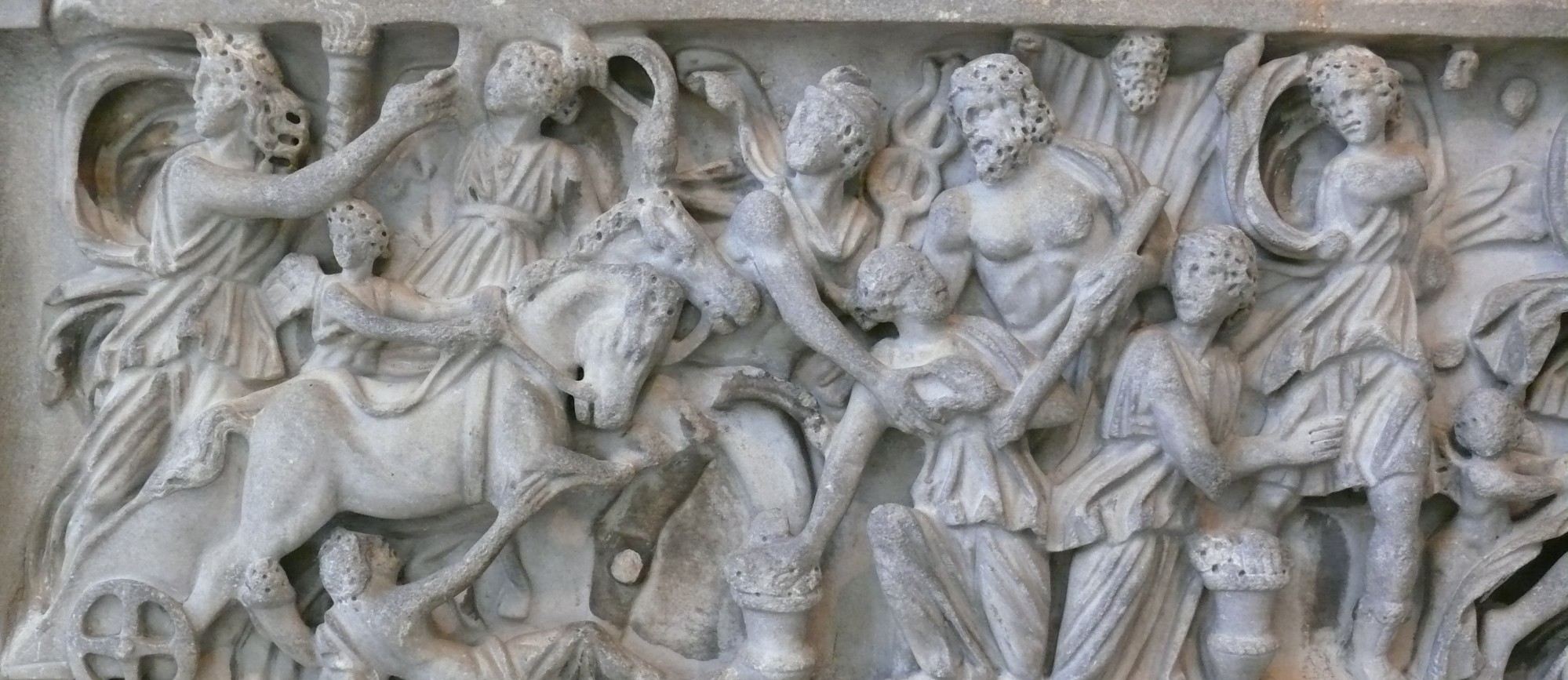 One of the most popular symbols for medicine today is a snake entwined around a staff. For most of us this image is associated with the medical profession, clinics, and hospitals. Yet while we often consider all of these symbols to be essentially the same, there are actually two critically different symbols from which each of these progress. Visually both involve serpents wound about staves, but one features only a single snake, while the other features not only a second snake, but also a set of wings. Beyond their appearance, the mythic origin of each symbol is very different, although both stem from Greek mythology. We see the first in the logos and symbols of many medical organizations including, the American Medical Association, BlueCross BlueShield association, the British Medical Association, the Brisith Royal Army Medical Corps, the United States Navy and Air Forced Medical Corps. The snakes and wings symbol we see paired with the U.S. Army Medical Corps, at some points in history the AMA, and frequently in the logos of various commercially focused medical organizations.
One of the most popular symbols for medicine today is a snake entwined around a staff. For most of us this image is associated with the medical profession, clinics, and hospitals. Yet while we often consider all of these symbols to be essentially the same, there are actually two critically different symbols from which each of these progress. Visually both involve serpents wound about staves, but one features only a single snake, while the other features not only a second snake, but also a set of wings. Beyond their appearance, the mythic origin of each symbol is very different, although both stem from Greek mythology. We see the first in the logos and symbols of many medical organizations including, the American Medical Association, BlueCross BlueShield association, the British Medical Association, the Brisith Royal Army Medical Corps, the United States Navy and Air Forced Medical Corps. The snakes and wings symbol we see paired with the U.S. Army Medical Corps, at some points in history the AMA, and frequently in the logos of various commercially focused medical organizations.


Of these two symbols, the first is called the rod of Asclepius, sometimes the asklepian, and is the staff wielded by the Greek god Asclepius. The second is called the caduceus, and belonged famously to the god Hermes, but was more generally borne by the messengers of the gods.
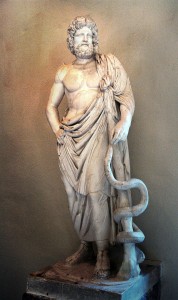
So what is the connection of these two symbols to medicine and its practitioners? Well for the the rod of Asclepius the connection is mostly obvious. Hesiod’s writings establish Asclepius as the son of Apollo and a mortal woman, and in the Iliad he is established as a noble physician. In myth Asclepius was raised by the centaur Chiron and taught medicine by him after Apollo killed his mother for cheating on him. Later in his life he uses his powers to raise the dead, and is punished by Zeus for infringing on the immortality of the gods. Due in part to the efforts of Apollo, Zeus eventually raises Asclepius from Hades to the ranks of the immortals as the most widely recognized god of healing in the Greek world. As a god of healing it makes sense that one of his symbols might be the symbol of medical organizations. In fact the cult of Asclepius established temples where people came for healing, and the priests of Asclepius were often physicians themselves. The famous Hippocratic oath, historically taken by physicians, originally swore by the names of Apollo, Asclepius, and the children of Asclepius, Hygeia and Panacea. The staff of Asclepius is not as well defined a symbol as the god himself. Both snakes and staves were traditional symbols of medicine in Greek culture, but the exact reason for this is not completely clear. Theories suggest that the snake represented rejuvenation and renewal with the shedding of skin, or that it was the medicinal properties of snakes themselves that made them a medical symbol. Similarly it was though that the staff might be the symbol of the wandering physicians who might carry them, or perhaps as a symbol of support in general. Another more modern theory relates the symbol to a traditional treatment of a Dracunculiasis, or the Guinea worm disease. This was a disease treated by wrapping the parasitic worms about sticks and slowly pulling the worm from the host while winding it about the stick so as to fully remove it. The modern treatment is similar to this ancient one, and so this represents a potential interpretation of the symbol. This interpretation partially ignores the presence of snakes as symbols of healing, and their use in healing temples in Greek society in favor of a more literal interpretation.
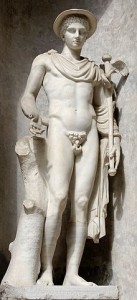
So with Asclepius and his staff being obvious symbols of medicine, how do Hermes and the Caduceus stack up as competitors for the modern medical logo? At first glance, they certainly don’t compare very favorably. Hermes was a god frequently thought of in myth as the messenger and herald of Zeus. He is depicted as a trickster, and at various times a god of travel and transitions, the conductor of souls to the afterlife, a patron of mysteries, and also a patron deity of commerce. The caduceus which is prominently recognized as his symbol is also the staff borne by other heralds, such as Hera’s messenger Iris. While the caduceus is sometimes used in medicine, it is also a common symbol of commerce, connecting with Hermes roles as the patron of commerce. In reality this seems to have little to do with medicine at all. The closest connection to Hermes, his symbols, and medicine, would have to be Hermes connection to mysteries, and eventually the tangential connection of both Hermes and the caduceus to the pseudo-mystical scientific practices sometimes referred to as the “Hermetic Arts”. Despite this the caduceus seems to have no historical or mythological connection to medicine, and so it seems strange that this symbol was adopted for use as a representation of medicine alongside the asklepian.


In some ways this confusion is probably caused by an often defended misunderstanding based on printer’s marks. The caduceus has been used at various times as a printer’s mark for its role in commerce, not medicine, and in some cases this has involved print on medical texts exported around the world. This coupled with the Army Medical association adopting the symbol in 1902 based on the lobbing of Capt. Frederick Reynolds. It’s entirely possible that this confusion has lead to the use of the symbol by the less informed, especially in the United States. Even with the branches of the U.S. Military and their respective medical organizations there is conflict, with the Army continuing to use the caduceus, and both the Navy and Air Force using the more traditional asklepian. Beyond simple confusions there are other theories about the reason for the use of the caduceus. One survey found that about 62% of professional organizations relating to medicine used the symbol of Asclepius, while about 76% of commercial organizations used the caduceus. One potential reason for this is that professional organizations are more informed than commercial organizations, but even the American Medical Association used the caduceus at various points in time. Preference might be given to the caduceus, especially in financially motivated scenarios because the more symmetric symbol is potentially more attractive as a logo with which to draw customers, or just more attractive to owners of companies in general.
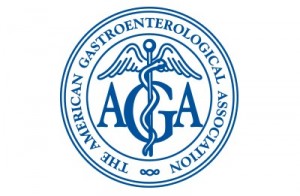
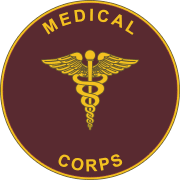
Whatever reason for the preference towards the caduceus in commercial medical symbols it’s very interesting to see more profit oriented medical associations using a symbol commonly associated with commerce. Either by accident or intentional monetization of the symbol this line between use of the caduceus and the asklepian is a very poetic one. On one side is the professional physician, represented by a god of medicine, and the other, the commercial health care organization, represented by a god of commerce.
Refrences
- http://www.oxfordreference.com/view/10.1093/acref/9780195170726.001.0001/acref-9780195170726-e-580?rskey=zeK1ZU&result=1
- http://www.oxfordreference.com/view/10.1093/acref/9780195170726.001.0001/acref-9780195170726-e-125?rskey=W5KxnS&result=1
- http://www.paulyonline.brill.nl/entries/brill-s-new-pauly/hermes-e510080?s.num=0&s.f.s2_parent=s.f.book.brill-s-new-pauly&s.q=hermes
- http://www.paulyonline.brill.nl/entries/brill-s-new-pauly/asclepius-e203800?s.num=0&s.f.s2_parent=s.f.book.brill-s-new-pauly&s.q=asclepius
- http://www.nytimes.com/2005/03/08/health/08cadu.html?_r=0
- Friedlander, Walter J. The Golden Wand of Medicine: A History of the Caduceus Symbol in Medicine.” New York, Greenwood, 1992
-
The symbol of modern medicine: why one snake is more than two.Robert A. Wilcox, Emma M. WhithamAnn Intern Med. 2003 April 15; 138(8): 673–677.
